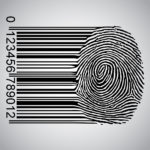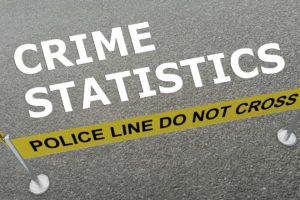What is Organized Retail Crime (ORC)
In a concise definition, “organized retail crime involves the association of two or more individuals engaged in illegally obtaining retail merchandise, data, and/or other resources in substantial quantities through both theft and fraud as part of an unlawful commercial enterprise.
The primary objective of these professional crime rings is to steal for the purpose of turning retail products into financial gain rather than personal use.” 1
Simply put, two or more individuals collaborate to steal merchandise to then fence or sell for a profit, or use return fraud to refund product for cash. Shoplifters usually act alone while an organized retail crime ring can include a whole network of people, including boosters, lookouts, fencers, diverters, and drivers.
Besides utilizing theft to monetize the stolen goods, organized retail crime rings tend to have a specific shopping list of desired products.
The Impact of Organized Retail Crime
The dollars lost to organized retail crime are significant.
- Organized Retail Crime (ORC) costs the retail industry approximately $30 billion each year. (Source: NRF)
- Reported value of ORC cases in 2016 exceeded $200 million. (Source: LPRC)
- Robberies and burglaries are up 8.6% since 2016 (Source: D&D Daily)
- Robberies continue to be a growing expense for retailers, costing an average of $8,180.17 in 2016, up from $2,465. (Source: NRF)
The Organized Retail Crime Process
The first step of recognizing and addressing organized retail theft is seeing the red flags. ORC thieves are both professional and proficient.
The organized retail crime rings are usually well-organized, perfecting mass theft of certain, hand-selected products and exploiting a store’s weaknesses, moving from store to store.
There are usually 2-3 regular participants on an ORC attack. This can include any of the following:
Boosters: professional shoplifters who often work from a list
Handlers: the organizer who sells the stolen items to fences
Fences (or diverters): dealer of stolen goods, usually at a discounted price
It’s common for several boosters to work an area, return to a common vehicle with stolen merchandise, unload, and then move onto the next location.
The thefts themselves with occasionally be brazen and executed on a mass scale (such as flash mob robberies) but more often, the booster slips in and out, barely or un-noticed using professional shoplifting tools or by skillfully distracting the staff from their theft.
With multiple parties involved, it is harder to build a criminal case when theft is discovered.
The Organized Retail Crime Shopping List
It’s helpful to know what’s on the crime ring’s shopping list. Here are the top items which are stolen and fenced.
Grocery
- cigarettes
- energy drinks
- liquor
- infant formula
Medication and Pharmacy
- allergy medications
- diabetic testing supplies
- pain relievers
- pseudoephedrine-based medications
- weight loss pills
- teeth whitening strips
Personal Items
- electronic toothbrushes
- razors and blades
- ovulation kits and pregnancy tests
- designer brand clothing
- handbags
Electronics
- cell phones
- digital cameras
- GPS devices
- laptops
- lithium batteries
- printer cartridges
- tablets
- televisions
- video games
Household
- blenders
- laundry detergent
- mixers
- vacuum cleaners
How to Prevent Organized Retail Crime

Organized retail crime needs to be addressed on three levels: locally, regionally, and nationally.
Local
At a store level defense, there are several steps to take to thwart organized retail crime, including:
- Add robust signage across the store, making your theft and surveillance policies clear
- Use EAS and high-definition video surveillance to supplement your loss prevention efforts
- Adhere to strict fitting room policies
- Utilize front door greeters and keep adequate staff on the floor
- Take measures to eliminate return fraud and gift card fraud, including ID checks, limits on returned items, and “this store only” credit
- Utilizing your POS exception report and video surveillance, look for shoplifting patterns
Regional
If you are a part of a multi-unit retail system or a franchise, you have an opportunity to share fraud patterns and inventory reports across an enterprise level. With aggregated data, it is easier to identify high-loss stores or regions, creating an organized response.
National
On a national level, retail stores should collaborate with law enforcement officials, linking evidence which can help identify organized retail crime rings via fraud ring analysis. Staying in communication with your local law enforcement professionals goes a long way towards helping you both.
Making the Case
Proper documentation is key to building and prosecuting a case. Organized and robust findings will also go a long way towards convincing the police department and prosecutor to work with your store when it comes to organized retail crime.
Include these items in your case files:
- Short summary of the basic details including investigation notes, dates, times and inventory stolen
- Filed police reports
- Witness statements
- Internal reports
- Video evidence
If available, also include face shots, vehicle information, and related cases.
Managing Organized Retail Crime
In conclusion, crime will continue to happen but you have to be proactive and diligent when addressing organized retail crime. Start by putting the proper procedures in place, work with local officials, and utilize technology to look for patterns and theft.


